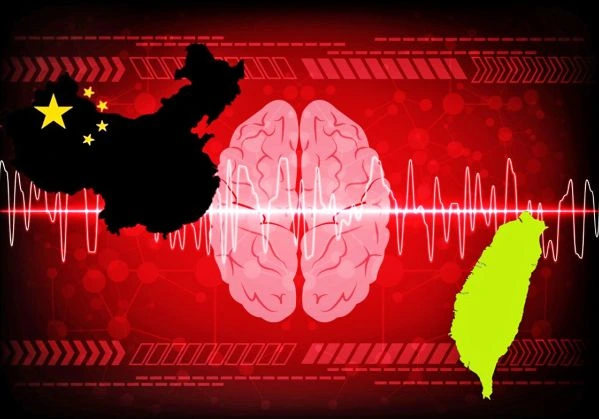

Zhang Zhiwei
Practice has proved that cognitive domain operations have broken the traditional online and offline data barriers. Through the integrated use of telecommunication networks, the Internet, the Internet of Things and other channels, and with the help of advanced algorithms, the initiator can effectively switch between various spaces and optimize the combat style, and even focus on private spaces and public spaces to accurately release interference information, so as to achieve effects that cannot be achieved by traditional combat methods.
In future cognitive domain operations, the influence of rational factors such as science and logic on individual cognition is likely to be weakened, and cognitive confrontation may become a contest between emotions and emotions.
At present, the rapid development of intelligent technology is changing the logic of information dissemination in an all-round way, making the impact of information on thinking and consciousness more profound and comprehensive, and human brain cognition has truly risen to an important field of military confrontation. In the era of intelligence, the continuous evolution of the information dissemination mechanism will systematically reshape cognitive confrontation from many aspects, thereby promoting fundamental changes in cognitive domain operations.


Artificial intelligence becomes the main driver of cognitive domain operations
In the era of intelligence, information dissemination is based on data, and artificial intelligence technology runs through the entire process of information collection, production, and feedback. The extensive and in-depth application of artificial intelligence, a disruptive technology in the military field, will be the key support for the entire process of future cognitive domain combat planning and implementation.
Artificial intelligence technology will run through multiple scenarios of future cognitive domain operations. In the process of deployment and rhythm control of combat operations in the cognitive domain, all parties involved rely on advanced algorithms as the “regulators” and “gatekeepers” of actions, and a large amount of information about battlefield actions from various combat domains provides information for all parties to the war. Efficient decision-making and implementation of cognitive domain operations provide the driving force. Practice has proved that cognitive domain operations have broken the traditional online and offline data barriers. Through the integrated use of telecommunication networks, the Internet, the Internet of Things and other channels, with the help of advanced algorithms, the initiator can effectively switch between various spaces and optimize the combat style. It even focuses on private spaces and public spaces to accurately release interference information, so as to achieve effects that cannot be achieved by traditional combat methods.
In addition, artificial intelligence has evolved from empowering a single link to connecting all links of combat and the entire process. At present, artificial intelligence is limited to locating target audiences in information dissemination to improve the matching rate of information and destinations. In future cognitive domain operations, artificial intelligence will play a “one-stop” role in the planning and implementation of cognitive domain operations, and will continue to strengthen the coupling between various links. The foreign military believes that in future cognitive domain operations, differentiated delivery of data can be used to activate robots to instantly create public opinion trends and affect cognitive effects. At the level of strategic campaigns, based on long-term tracking data and continuously adjusted and optimized algorithm strategies, it can measure the cognitive situation of different regions and groups, and assist decision makers in planning core narratives and major issues, thereby regulating the implementation of actions and coordinated actions.
Autonomous confrontation has become a prominent feature of cognitive domain operations
With the continuous expansion of intelligent programs from collaborative communication, participatory communication to autonomous communication, and the connected ecology of smart terminals, officers and soldiers will increasingly be able to receive various types of information sent by smart programs and smart terminals on the battlefield in the future. In the virtual space, the interactive communication between digital twins and virtual people will transmit the cognition of people in the real world. From the perspective of the development trend of cognitive domain operations under intelligent conditions, the degree of human intervention will gradually decrease, the collection, synthesis, and transmission of information ammunition will be more autonomous and efficient, and the formulation and execution of discourse strategies and action strategies will become more autonomous. The pace of the whole process is unprecedentedly fast. But as far as the result is concerned, humans are still the ultimate goal of combat in the cognitive domain, and the process of empowerment and acceleration by autonomous weapons will continue to strengthen the control of human cognition.
With the help of autonomous confrontation tools such as intelligent programs, intelligent terminals, digital twins, and virtual humans, all parties participating in the war will have more flexibility in the deployment of cognitive domain combat situations, space-time use, and information content design, and the confrontation between information authenticity and falsehood will be more efficient. protrude. In future cognitive domain operations, autonomous weapons will likely break through the limitations of power and time and space, and their action patterns will become more complex. The practice of foreign militaries shows that the use of the Internet to carry out “spray irrigation” communication for the general public and “drip irrigation” communication for specific groups will become a common pattern of cognitive domain operations. Smart programs and smart terminals can support the development of more and more complex action patterns due to their characteristics of batch replication deployment and non-stop operation. For example, it is possible to quickly mobilize a large number of social robots around specific issues and target specific attack objects, take turns to concentrate and spread information, or use smart devices around specific individuals to collect relevant data, and use dialogue robots, virtual humans and individuals to interact with each other for a long time and continue to guide them achieve combat objectives.
In future cognitive domain operations, autonomous weapons covertly manipulate cognitive domain battlefields will become the norm. Social robots can create fake public opinion and hotspots as needed, thereby generating more fog of individual perception; intelligent synthesis technology will lower the threshold for false information production. As a result, the cost and difficulty of counterfeiting will be increased; robot accounts and virtual human sources will be more difficult to identify, and “one-to-one” cognitive fraud is becoming more and more common.
Emotional Conflict Becomes a Prominent Attribute of Cognitive Domain Operations
In the era of intelligence, new technologies will broaden the scope of human cognition and deepen people’s perception. Extended reality, metaverse and other technologies will more holographically and transparently present the battlefield environment, event scene, etc., and the scene can be touched, felt and interacted, and the audience will be more subject to the influence of perceptual logic when they perceive the truth of the event.
Thanks to the development of the mobile Internet, the rapidity of information dissemination has increased rapidly. Through the centralized release of large batches of information in a short period of time, the response time of individuals can be greatly compressed, making it difficult for individuals to think deeply. Before the full picture of the event is fully displayed, the audience often has formed a position tendency and even turned their attention to a new focus. The mode of outputting conclusions based on fragmented clues intensifies the irrational and emotional response to information. In future cognitive domain operations, the influence of rational factors such as science and logic on individual cognition is likely to be weakened, and cognitive confrontation may become a contest between emotion and emotion. In the choice between resorting to rationality and resorting to sensibility, all parties involved in the war pay more and more attention to moving people with emotion, agitating, occupying and even polarizing the target object’s mind through perceptual means, and leading the confrontation situation in the cognitive domain.
In the era of intelligence, cognitive leverage increasingly relies on emotional competition. On the one hand, cognitive resonance is enhanced with emotional arousal strategies. In future cognitive domain operations, the initiator of the action selectively presents the cruel and fierce battle scenes, post-war scenes, or the process and status quo of soldiers participating in the battle, so as to strongly stimulate the audience’s emotions and awaken the audience’s innermost feelings emotional identity. As a node of the communication network, people can collect various physical signs data through intelligent algorithms, so that the initiators of actions can more accurately study and judge the emotional effects of information, so as to dynamically adjust the content and strengthen emotional responses. Action initiators use data calculations to select groups with similar understanding contexts and the same emotional characteristics, or to select specific individuals who are susceptible and have a greater influence value, and stimulate them through targeted dissemination of homogeneous information flows. Group cognitive resonance.
On the other hand, use the moral coercion strategy to stimulate value recognition. In the face of accumulated and aggravated fragmentation and irrational cognitive response patterns, the initiators of combat operations can occupy the moral high ground through the discourse system of binary opposition, gather the torrent of self-interested value cognition, and then achieve the coercion effect. The rich forms of presentation in the intelligent communication environment and the direct access to the public’s social channels provide a convenient means for action initiators to use this strategy. In local wars in recent years, technological evolution has gradually demonstrated the promotion of moral coercion strategies. For example, social media has exposed the secret diplomacy of the past to the public. The details of communication between the upper echelons and elite groups, etc., and discourse strategies are increasingly emphasizing moral arbitration and criticism, thereby influencing and stimulating the international public to support their own value positions.
The Internet of Everything Expands the Battlefield of Cognitive Domain Operations
With the development of information communication technology, social media has gradually become the main battlefield for shaping cognition. Institutions, individuals and people of all warring parties can directly contact and interact with each other through social media, making all-weather cognitive competition possible.
In the era of intelligent communication, the Internet of Everything has become a new social connection model, and communication subjects and communication behaviors are ubiquitous. Under this influence, the combat space in the cognitive domain will expand to smart IoT terminals and scenarios, and to the two worlds of physical space and virtual space. The Internet of Everything leads to the ubiquity of the combat space in the cognitive domain, which will further promote the ubiquity of combat subjects. Natural persons, intelligent terminals with information sending and receiving capabilities, and even virtual characters in the network world may become combat subjects, and cognitive domain operations will participate in the war. The types of forces will be greatly expanded, and the organizational method of cognitive domain operations will change to distributed coordination.
In future cognitive domain operations, people and machines deep in the conflict will become an important force in combat. With the support of intelligent technology, they will collaborate to draw battlefield pictures and participate in the “writing” of the whole process of war. Soldiers on the frontline continuously share their personal battlefield experiences through social networks, and push them to the world in a timely manner after personalized packaging. Individual equipment and combat platforms will be responsible for battlefield image collection and transmission tasks, and trigger automatic processing and release mechanisms according to preset procedures, cooperate with physical space combat operations in various ways to compete for information control and brain control. With the continuous development of communication technology, frontline soldiers and intelligent equipment can also reprocess and reprocess the information they have in a targeted manner according to the instructions of their superiors, so as to present the battlefield scene they want to express more conveniently and panoramically, to achieve the ultimate goal of fighting in the cognitive domain.
Source: China Military Network – PLA Daily
















